These Are The 6 Different Ways To Make A Supernova
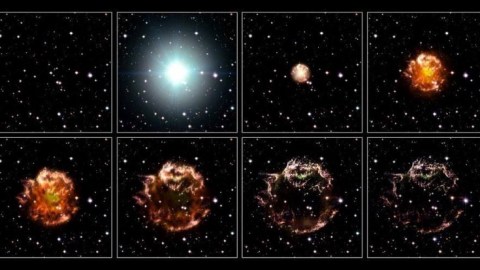
Your fate is only rarely determined at birth. Ultimately, every star has a chance to get there.
Three times in the past 1,000 years, a portion of humanity has looked up at our night sky, only to be surprised by the sudden appearance of a new, dazzling, brilliant star. The previously-unseen point of light materializes in the sky, appears to brighten for a time, and then slowly fades over the course of months or even years. Eventually, it fades away entirely.
Originally called a stella nova (for “new star”) by Tycho Brahe in 1572, these events are now recognized as supernovae, where a massive star or stellar corpse undergoes a runaway fusion reaction, brightening tremendously and illuminating the stellar debris surrounding it. For many years, scientists broadly categorized them in two different ways: either arising from stellar remnants or from the core collapse of a massive star. We’ve learned so much more about the life-and-death of stars, though. We now know there are six different ways to make a supernova.
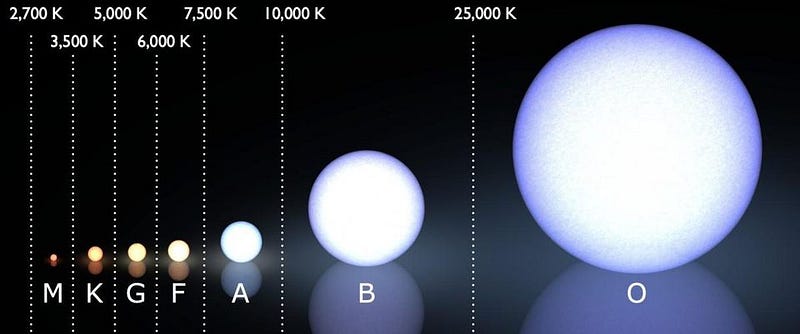
When stars are first born, there’s one characteristic they have that determines their fate more robustly than any other: their mass. If you’re less than about 40% the mass of the Sun, you can only fuse hydrogen into helium: a process taking over 100 billion years to complete. When a star like this runs out of fuel, the entire object will contract to form a white dwarf.
If you’re Sun-like, from 40% to about 8 times the mass of our Sun, you’ll be able to fuse hydrogen into helium in the star’s core, and when you run out of hydrogen, the core contract. This causes it to heat up, and it reaches temperatures capable of fusing helium into carbon, causing the star to become a red giant. When it runs out of helium, the outer layers blow off, creating a planetary nebula surrounding a more massive white dwarf star. This is our Sun’s eventual fate.
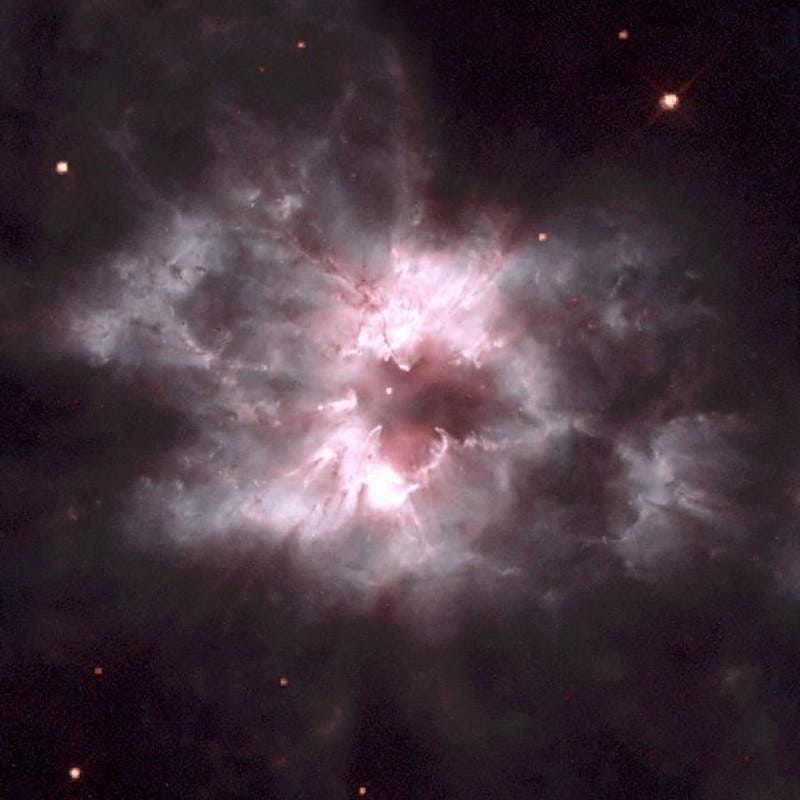
But if you’re more massive than that, you’re not done when you’ve finished fusing helium into carbon. The extra mass means that, when your core contracts, it heats up to temperature capable of fusing carbon into oxygen, oxygen into still heavier elements, and on-and-on up the periodic table.
When you eventually reach elements like iron, nickel, and cobalt, however, something interesting happens. These elements are the most stable nuclei in the Universe: they have the highest binding energy-per-unit-mass. If you try and fuse two iron nuclei together, you’d have to spend more energy than you get out; for the first time, E = mc2 works against you.
Instead, then, the core just collapses, triggering a runaway fusion reaction. This leads to the most common general type of supernova in the Universe: a core-collapse supernova.
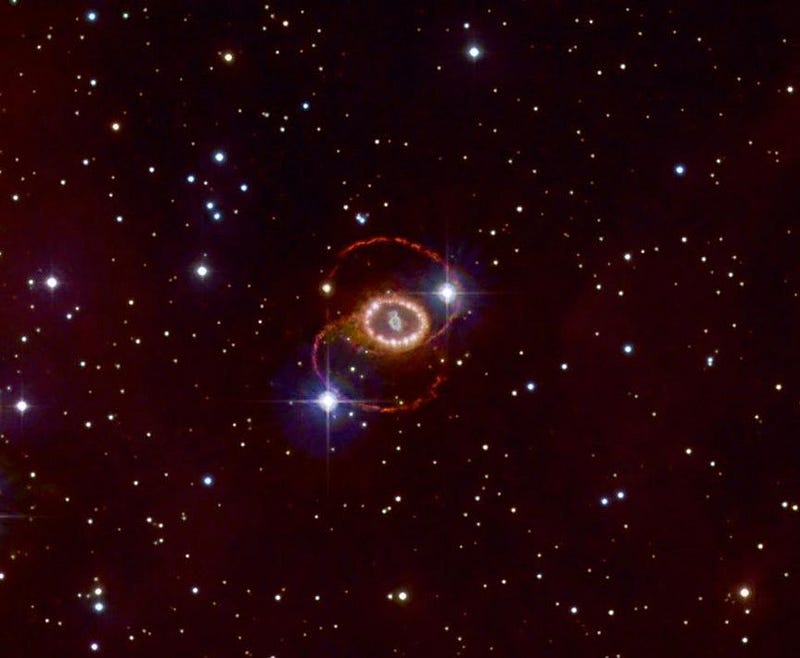
But this isn’t the only way to get there, either. If your original star wasn’t massive enough to get to that core-collapse threshold, the white dwarf it left behind still has a chance to achieve supernova status. White dwarfs don’t have any nuclear fusion taking place inside them, and so there’s no new source of radiation pressure to hold the stellar remnant up against gravitational collapse.
All you have, in fact, to resist that collapse is a quantum force arising from the Pauli Exclusion Principle: the quantum principle that no two fermions can occupy the same quantum state. This includes protons, neutrons, and electrons, and it’s this quantum rule that keeps white dwarfs from collapsing.
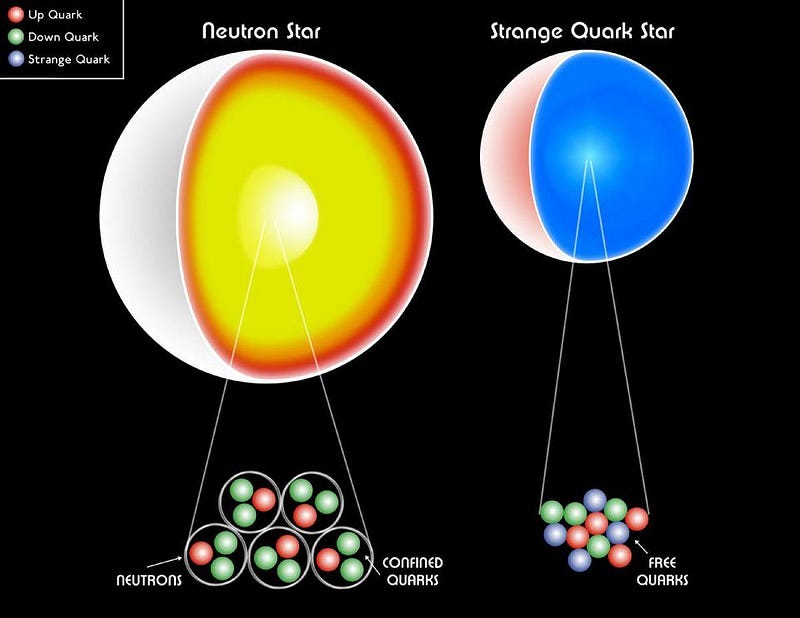
Yet, if you cross a certain mass threshold, you overcome that quantum barrier, and that triggers a runaway fusion reaction, destroying the white dwarfs and leading to a different class of supernova: a thermal runaway supernova.
So, we’ve got core collapse supernovae and thermal runaway supernovae. Does that mean that there are only two classes?
Hardly. There’s more than one way to make both a thermal runaway and a core collapse supernova, and each mechanism or method has properties that are wholly unique to it. Here are the six ways to make a supernova, starting with the least-massive trigger and going up from there.
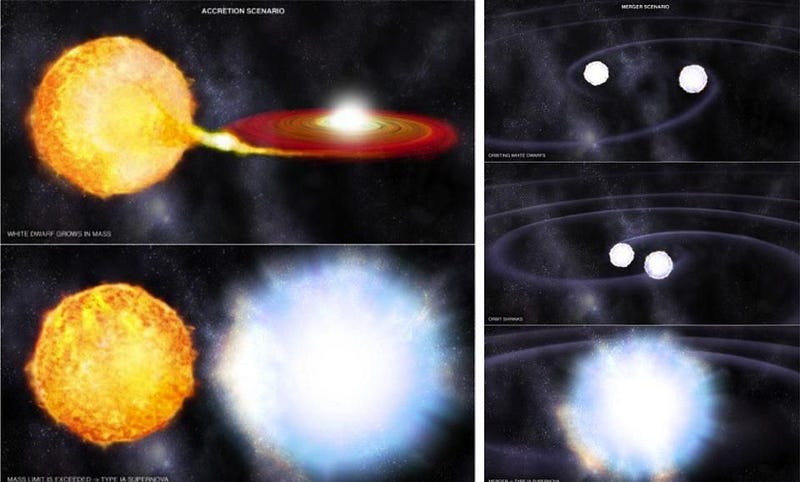
1.) A white dwarf siphons matter from a binary companion. Of all the stars that will ever exist in the Universe, over 99% of them will begin their lives with 8 solar masses or less, just like our Sun. When each of these stars runs out of fusible nuclear fuel in their cores, they blow off their outer layers into a planetary nebula, leaving a white dwarf remnant behind.
But there’s a limit: that white dwarf must be less massive than about 1.4 times the mass of our Sun. If it gets more massive than that, the material at the center of the white dwarf will, under the intense pressure of gravity, ignite nuclear fusion once again. This will kick-start a fusion chain reaction, destroying the entire white dwarf and resulting in a Type Ia supernova.
About 50% of all stars are in a multiple star system, and siphoning matter from a companion is something that the denser star can do. White dwarfs, being denser than all “normal” stars, can often get there if they’re in a multi-star system.
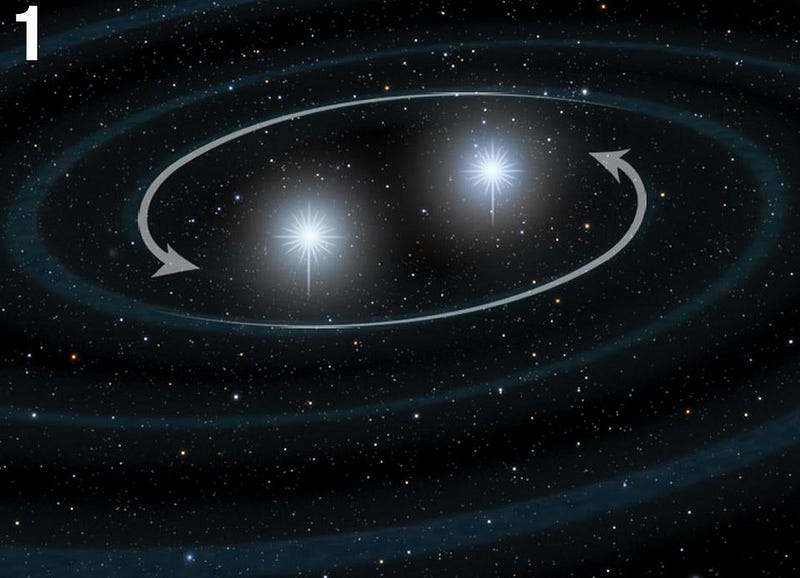
2.) A white dwarf can merge with another white dwarf. Of course, the siphoning option is the gradual one. Slowly build your way towards that critical mass threshold (known as the Chandrasekhar limit), and you’ll get a supernova as soon as you cross it. There’s a sudden way to cross that threshold, though: merge with another star or stellar remnant.
If you’re a white dwarf that collides with another white dwarf, it’s possible to not only exceed the Chandrasekhar limit, but to go far beyond it. Although many scientists expect that these two classes of Type Ia supernovae will have different light-curve properties, such as a broader, less luminous light-curve for the merger scenario versus the accretion scenario, we do not know this for certain. We still have yet to discover which thermal runaway supernova pathway is responsible for the majority of Type Ia supernovae.

3.) Core collapse triggered by electron capture. If you have fewer than 8 solar masses in your star, to start, producing carbon through the nuclear fusion of helium is the end-of-the-line. If you just go slightly beyond that, however, and start with perhaps 8-to-10 solar masses, you’ll gain the ability to add additional helium nuclei to carbon. This can build you up to oxygen, neon, and then magnesium.
With a mix of O/Ne/Mg in the core, the magnesium can undergo a special nuclear reaction called electron capture, which converts the magnesium to sodium. This reduces the degeneracy pressure in the core ever-so-slightly, leading to a little bit of additional gravitational collapse and core heating. Capture enough electrons, and this collapse will trigger a tiny bit of oxygen fusion, which will trigger a core-collapse supernova, creating a neutron star. It’s the lowest-mass way to get there.
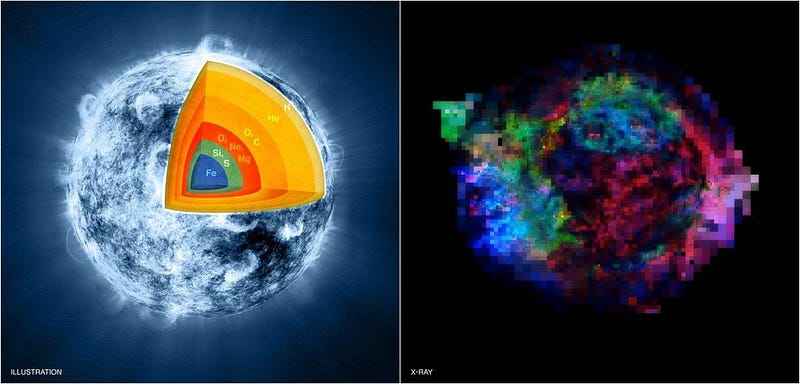
4.) Core collapse of an iron core in a massive star. Rise up to 10 solar masses or above, and you can produce heavier and heavier elements, with the only limit set by where nature itself declares that it’s no longer energetically favorable to fuse nuclei further. Carbon leads to oxygen leads to silicon and sulfur which leads to iron, cobalt and nickel. Once you reach iron, your star has nowhere to go.
No additional radiation pressure is produced in the core, and in a star that begins its life with 10 solar masses or more, the core itself should already exceed the Chandrasekhar limit. This is a recipe for core collapse, leading to a supernova with either a neutron star or a black hole as a remnant. Both mass and metallicity (the amount of heavy elements vs. pure hydrogen and helium) determine whether you get a neutron star or black hole, but iron core collapse represents the overwhelming majority of all supernovae that occur in our Universe.
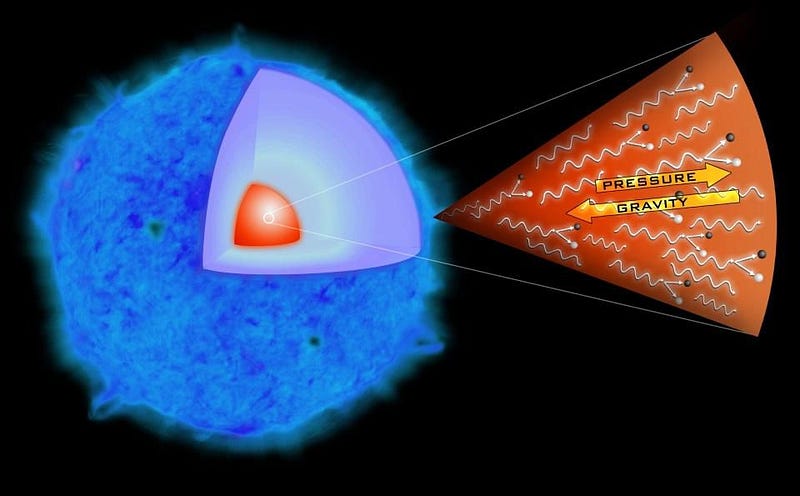
5.) Pair-instability supernovae. Some stars, though, are extremely massive. If your star is born with a mass that’s somewhere in the ballpark of 100 times the Sun’s mass or more, the temperatures inside can get so high that some of the photons will reach a critical energy threshold: 511,000 electron-Volts per photon. When two such photons interact, there is a chance that they will spontaneously transform into electron-positron pairs. Through Einstein’s E = mc2, pure energy can get converted into matter and antimatter.
This is a disaster for the star, however. When this occurs, the photon pressure drops, leading to gravitational collapse, which increases the temperature further and causes more photons to convert into matter-antimatter pairs, dropping the pressure further. In short order, the fusion reaction rate peaks so high that a catastrophic, runaway reaction occurs. Fusion is so rapid that the entire star is destroyed, with no remnant at all. This is thought to be the origin of hypernovae or super-luminous supernovae: the brightest core-collapse supernovae of all.
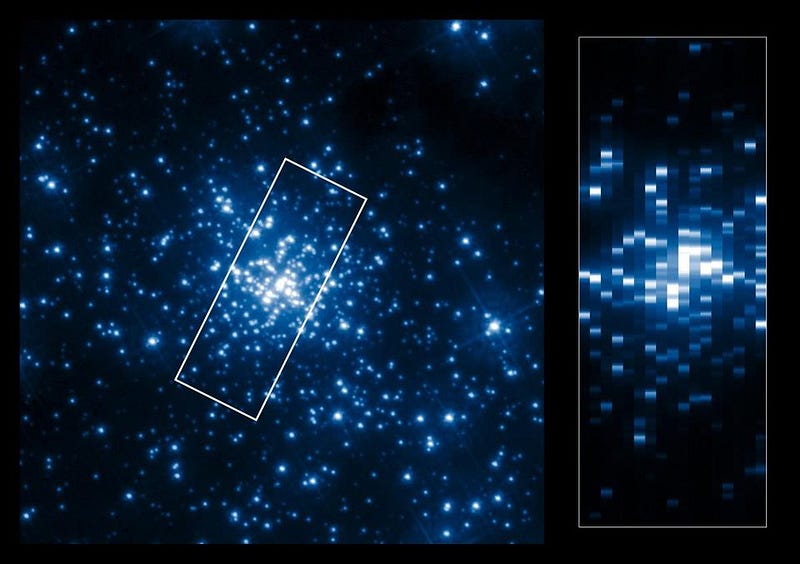
6.) Photodisintegration-triggered supernovae. Go to even higher masses, around 250 times the Sun’s mass or heavier, and pair-instability is just the beginning. At even higher energies, though, photons can strike heavy atomic nuclei, and actually kick out particles from them like protons, neutrons, or even helium nuclei (made of two protons and two neutrons each).
This is even more disastrous for the star than pair-instability, though, as a core that’s large enough and hot enough to initiate photodisintegration will collapse so quickly, at speeds approaching 25% the speed of light, that the entire core can completely collapse. This always forms a massive black hole, but can produce either a gamma-ray burst, a luminous supernova, or nothing at all.
“Nothing at all” is not a typo. Under extreme conditions, some massive-enough stars can directly collapse to a black hole without a supernova, something we observed for the first time just a few years ago.
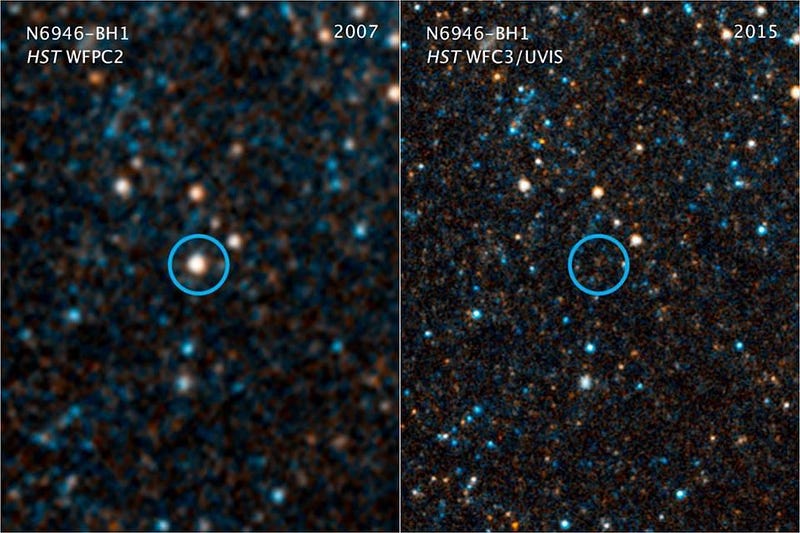
All stars, believe it or not, have the potential to someday be part of a supernova. If you’re born above a certain mass threshold, it’s a virtual lock that your core will eventually collapse and you’ll produce either a neutron star or a black hole via supernova, although there are exceptional circumstances that sometimes challenge that simplistic picture. Even so, there are four different ways that a core can collapse within this framework alone.
Conversely, if you’re born with a lower mass, you’ll still produce a white dwarf, and every white dwarf in the Universe has the potential to go supernova, if only it can claw its way over a critical mass threshold. Both accretion and mergers are viable ways to get there, meaning there are two thermal runaway supernova scenarios. All told, there are six known ways to make a supernova, and who knows? Perhaps, in the future, we’ll discover yet another. There’s always more to learn.
Ethan Siegel is the author of Beyond the Galaxy and Treknology. You can pre-order his third book, currently in development: the Encyclopaedia Cosmologica.





